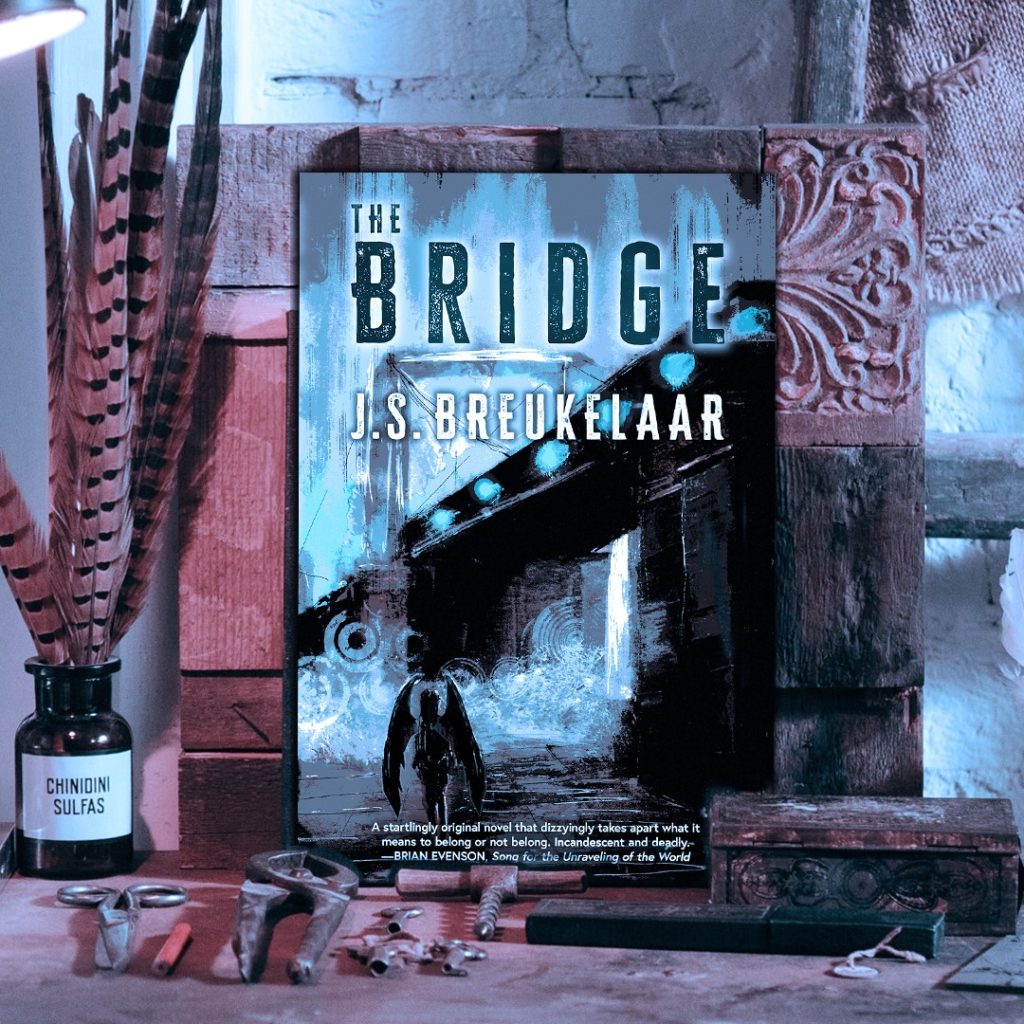
My author copies of The Bridge arrived today. My new puppy Eleanor barked as I opened the boxes, in either fear or excitement. The book sits on the desk as I write this. My fourth book and third novel, this time it is an out-of-body experience. Previous books arrived in similar boxes and it was euphoric, terrifying, victorious, or any happy-dance-air-punching combination of the above. But this time it’s different. I look at The Bridge and it looks back and me and any minute one of us is going to say, “Wait. Do I know you?”
Maybe because it was my pandemic book. Started, abandoned and finally completed in isolation and effortful focus. But I think it could be something else, too. This disconnect, this weird feeling of apprehension along with an almost sensual kind of flutter as I wait for the introductions (maybe we do know each other after all, when was it? I was younger then—so were you, but inside, we are both the same, yes?) might be something those further along this bridge (toward what? between what) may have already experienced. My friends, colleagues, and idols with their half-dozen or more publications will yawn maybe and say, yup, I remember that uncanny feeling I had with novel number three, that sense of something lost forever and yet about to be. But for me this is new. I stand, like my character Meera on the bridge, having left one world behind, and not knowing what, if anything waits on the other side. Yet pretty sure it’s where I need to be.
In most of the interviews so far, the question arises: What is the bridge in The Bridge? Here are three things, which are not everything but three is the number of The Bridge so it’s a good place to start.
1 – In the book, the bridge is a literal bridge which Meera must cross to get between Tower Village (her campus) and Wellsburg College (their campus) bisected by Lots River. It is an antique arched structure, blue-lit at night and where Mades must not go after dark lest the Hunter gets them, and he does. It is also paradoxically a safe space for Meera to call her guardian Narn ten thousand kilometres away in the South Rim. Narn, necromancer and sorcerer of better-late-than-never and who connects the old world of vengeful goddesses to the new world of will-work-for-food witches. The bridge is also figuratively the imagination, and memory—neurologically amputated from the brains of the Father’s Mades through a gene-restriction coding protocol called Augmented Reproduction Technology, or ART. Meera and her doomed twin discover that they have broken the father’s code, burned his bridge, so to speak between AI and Regular (human). The revenant Kai can remember. The guilty runt Meera can imagine. And does. They complete each other, but by extension, they undo each other too.
Meera crosses the bridge between the soulless purpose-built campus designed to keep Mades in their place, to the older college town with its dark history, with its heady promise of death, and she is gone. She becomes the star of a horror reading series—Mades have forgotten more about fear than most Regulars will ever know. Fiction, or what I call in the novel, Fakelore, is the bridge into what the Regulars think they can never be, and once Meera gets enough of them on it, for their sins, she’ll burn that sucker down.
2 – The Mades are also the bridge by which the Father, via his Forever Code, will cross back into Paradise from which he has been so unjustly ejected. He inserts his sins rendered in 1s and Os via soluble mesh implant into a human female zygote, and the result, via surrogate, are the Mades. Burdened with this unbreakable compliance code, these human-AI hybrids face a short and fearful future unless Meera and her dead sister Kai can find the bridge to their collective past. The bridge is sisters.
3 – The bridge (in a different form) is where I stood in 2012 at Tin House Summer Workshop where I found out that I was, after all, a writer. It is a literal bridge, called Blue Bridge or Cross Canyon Bridge and it spans the north and south campuses of Reed College over Reed Lake. It is blue lit at night like Tron, and some readers of this essay will recognise it and will have maybe stood there themselves and looked down at the water as we did, and fuelled on wine and poetry and whatever, will have made beaver jokes as we did, and pledged hearts and souls to each other and to the written word. The bridge doesn’t take these kids of pledges lightly. The beavers don’t either.
J.S. Breukelaar is the author of Collision: Stories, a 2019 Shirley Jackson Award finalist, and winner of the 2019 Aurealis and Ditmar Awards. Previous novels include Aletheia and American Monster. Her short fiction has appeared in the Dark Magazine, Tiny Nightmares, Black Static, Gamut, Unnerving, Lightspeed, Lamplight, Juked, in Year’s Best Horror and Fantasy 2019 and elsewhere. She currently lives in Sydney, Australia, where she teaches writing and literature, and is at work on a new collection of short stories and a novella. You can find her at thelivingsuitcase.com and on Twitter and elsewhere @jsbreukelaar.
This essay is part of the blog tour for The Bridge. You can also enter here to win $50 in books.
Follow Vol. 1 Brooklyn on Twitter, Facebook, and sign up for our mailing list.
